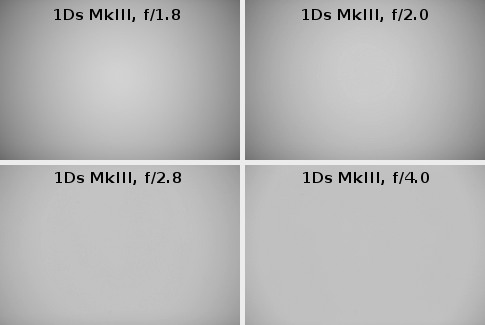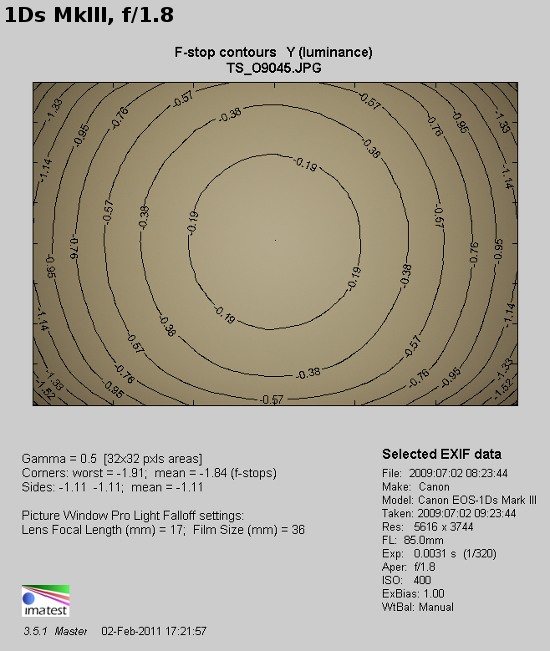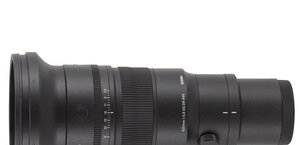Canon EF 85 mm f/1.8 USM
8. Vignetting

As you see the vignetting at the maximum relative aperture is noticeable but not especially bothersome. Its value we assessed as 24% (-0.80 EV). On slight stopping down to f/2.0 we see this aberration decrease to 20% (-0.66 EV). Implementing f/2.8 aperture makes the problem disappear completely because then vignetting amounts to just 7% (-0.23 EV).
Please Support UsIf you enjoy our reviews and articles, and you want us to continue our work please, support our website by donating through PayPal. The funds are going to be used for paying our editorial team, renting servers, and equipping our testing studio; only that way we will be able to continue providing you interesting content for free. |
- - - - - - - - - - - - - - - - - - - - - - - - - - - - - - - - - - - - - - - - - - - - - - - -
If you attach the Canon EF 85 mm f/1.8 USM to any full frame camera its task will become much more difficult. The photos below show it rather well.

At the maximum relative aperture we deal with a significant level of brightness loss in the frame corners. According to our measurements it is 47% (-1.84 EV). When we use f/2.0 aperture the vignetting decreases to 41% (-1.53 EV) and on stopping down to f/2.8 it drops further to the value of 21% (-0.69 EV). The problem disappears completely by f/4.0 and f/5.6 where the level of this aberration we assess as 14% and 9% respectively.
 |






